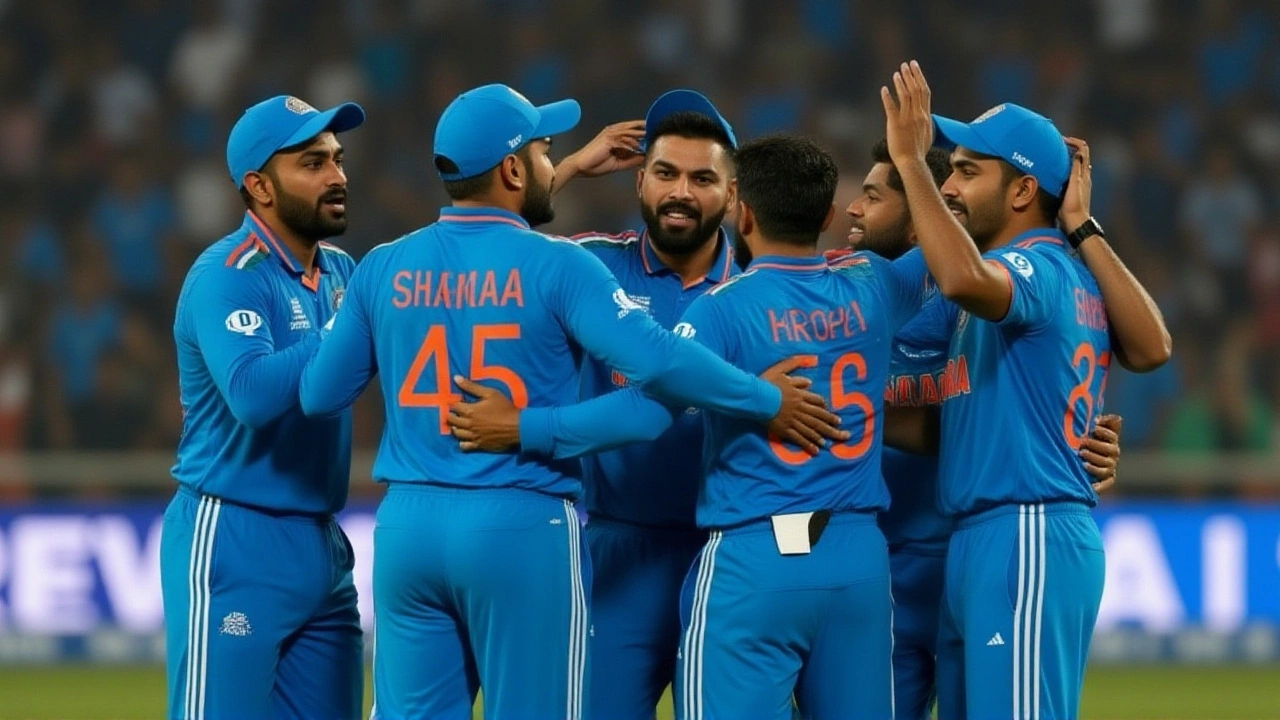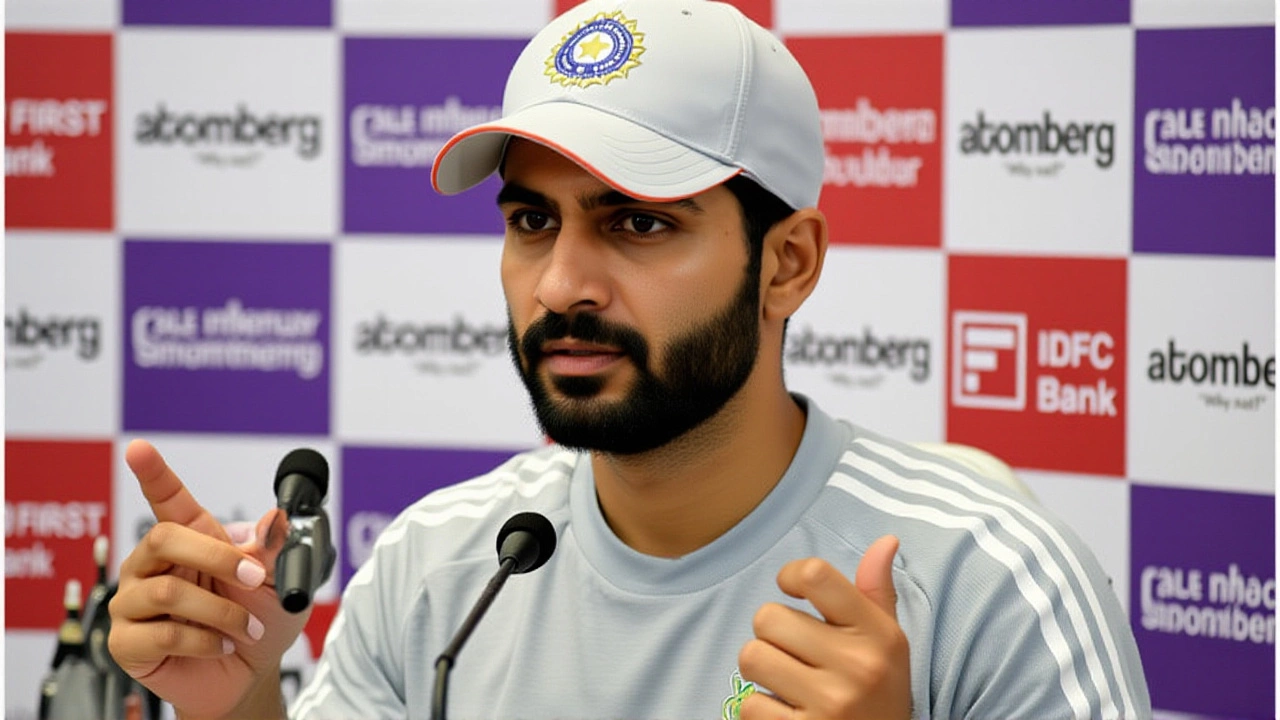When the Board of Control for Cricket in India (BCCI) unveiled its squad for the three-match ODI series against South Africa on November 24, 2025, the absence of Jasprit Bumrah and Mohammed Siraj didn’t just raise eyebrows—it sparked a quiet revolution in how India manages its star players. The decision, made during the second Test in Guwahati, wasn’t about form or fitness. It was about foresight. And it’s a sign of how seriously the BCCI now treats the ICC Men’s T20 World Cup 2026India—a tournament they’re hosting, and one they believe could define a generation.
Why Rest the Stars?
Here’s the thing: Bumrah and Siraj didn’t just sit out the ODI series. They were actively playing in the ongoing Test match in Guwahati, having bowled 87 overs across the first two Tests in Kolkata and Guwahati. That’s not fatigue—it’s a calculated reset. The BCCI’s official line, echoed by NDTV and Jagran.com, was blunt: workload management. But behind that phrase lies a deeper strategy. After the ODI series, India plays five T20Is against South Africa, starting December 9. Then, in February 2026, the World Cup kicks off. Bumrah, 31, has missed entire seasons due to stress fractures. Siraj, 29, has battled back spasms. Neither can afford to be broken before the biggest stage.
They’re not alone. All-rounder Axar Patel, 31, was also left out—not because he’s injured, but because the team needs fresh legs in the middle overs. The BCCI isn’t just resting players; it’s rotating them like chess pieces in a long-term game.
The New Leadership and the Return of Pant
With regular ODI captain Shubman Gill, 28, sidelined by a neck injury from the Kolkata Test, and vice-captain Shreyas Iyer, 29, recovering from a fielding mishap in Australia, the burden fell to KL Rahul, 32. His appointment as captain was expected, but the surprise came with the vice-captaincy: Rishabh Pant, 27, returned to the ODI squad for the first time since August 2024. His last appearance was against Sri Lanka—nearly 15 months ago. Now, he’s back as the wicketkeeper and second-in-command. That’s not just a nod to his talent. It’s a signal: Pant is being groomed as the future face of India’s white-ball cricket.
And the squad? It’s a blend of experience and youth. Rohit Sharma, 37, and Virat Kohli, 36, are still in, but their roles are clearly shifting. The new pace trio—Harshit Rana, 24, Prasidh Krishna, 28, and Arshdeep Singh, 26—will carry the load. Arshdeep, who took 11 wickets in the Australia ODI series, is now India’s most trusted death bowler. Rana, a raw talent from Bengal, was called up after a blistering Ranji Trophy season. This isn’t a rebuilding phase. It’s a test run.

The BCCI’s New Philosophy
This isn’t the first time India has rested stars for a bilateral series. Remember when they skipped the 2023 ODI series against Sri Lanka to prepare for the World Cup? Or when they gave Virat Kohli a break ahead of the 2022 T20 World Cup? But this time, the timing is sharper. The ODI series against South Africa ends on December 6. The T20Is begin December 9. No gap. No buffer. That’s intentional. The BCCI wants these players to transition seamlessly from red-ball to white-ball without burnout.
Hardik Pandya, 31, is also absent—not because he’s injured, but because he’s still recovering from the hamstring tear he suffered in the Asia Cup 2025. His return is expected before the T20 series, but the BCCI won’t rush him. They’ve learned the hard way: a single setback in the World Cup could cost them everything.

What’s Next?
After the South Africa series, India faces a home ODI series against New Zealand in January 2026. Sources close to the team suggest that Bumrah and Siraj may sit out that series too. The message is clear: bilateral ODIs are now secondary. The T20 World Cup is the only trophy that matters in 2026. And the BCCI is playing a long game—where rest isn’t a luxury, it’s a tactic.
For fans, it’s frustrating. We want to see our best players in every format. But for the team management, it’s survival. Cricket isn’t just about winning matches anymore. It’s about preserving talent for the moment when the world is watching.
Frequently Asked Questions
Why were Bumrah and Siraj excluded from the ODI series despite playing in the Test match?
The BCCI is managing their workload to ensure they’re fully fit for the five-match T20 series against South Africa and the T20 World Cup 2026. Even though they bowled in the Test, the physical demands of ODI cricket—especially the death overs—are different and more repetitive. Resting them now prevents overuse injuries ahead of the bigger tournament.
Who is leading India in the ODI series, and why was Rishabh Pant named vice-captain?
KL Rahul is captain after Shubman Gill’s neck injury. Rishabh Pant was named vice-captain to give him leadership exposure and to test his readiness for future captaincy roles. His return to the ODI team after 15 months signals the BCCI’s intent to rebuild around younger, explosive players ahead of the T20 World Cup.
How does this decision compare to past BCCI workload policies?
The BCCI has previously rested players ahead of major tournaments—like giving Kohli a break before the 2022 T20 World Cup. But this is the first time they’ve skipped a bilateral ODI series entirely to preserve pace bowlers for a T20 tournament right after. It reflects a more aggressive, tournament-first approach, prioritizing peak performance over consistent participation.
Will Bumrah and Siraj play in the T20 series against South Africa?
Yes, barring any unforeseen injury, both are expected to return for the five-match T20 series starting December 9, 2025. The BCCI has made it clear that the ODI rest was purely a transition phase. Their presence is critical for India’s T20 World Cup campaign, especially in high-pressure powerplay and death overs.
What impact does this have on India’s ODI future?
It signals a shift away from ODI dominance. With the 2027 ODI World Cup still two years away and the T20 World Cup dominating the calendar, India is deprioritizing bilateral ODIs. This squad is a proving ground for younger players like Harshit Rana and Tilak Varma, who may become the core of India’s white-ball team by 2027.
Is this decision controversial among fans and experts?
Absolutely. Many fans feel the ODI series deserves full-strength teams, especially against a strong South Africa side. But analysts like Harsha Bhogle and Suresh Menon have backed the move, calling it "prudent and long-term thinking." The real test will be whether India wins the T20 World Cup—if they do, this strategy will be hailed as visionary.

